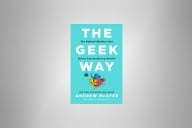You have /5 articles left.
Sign up for a free account or log in.
This conversation is with the authors of the chapter “An Ecology of Change in Higher Education” in our new co-edited book, Recentering Learning: Complexity, Resilience, and Adaptability in Higher Education (JHU Press, 2024). The book (in paper and ebook form) is available for order from JHU Press and on Amazon.
Michael Goudzwaard is the associate director of learning innovation at the Dartmouth Center for the Advancement of Learning. Cynthia Cogswell is the director of data strategy for student affairs, global programs and university life at New York University.
Q: What main themes of your chapter would you like readers to take away and bring back to their institutions and organizations?
A: We spoke with seven institutions to learn if ecological principles might apply to higher education organizations and systems. Through these interviews, three themes emerged that are particularly applicable to recentering learning:
- The ecological principle that was highly represented in the early days of the pandemic was that of emergent properties, or in other words, [how] systems develop through interactions, rather than by design or mandate. If you were working in higher ed in 2020, you can probably think of your own examples of how people and departments that did not typically work together found ways to rapidly prototype and implement a way to reach students where they were.
- The principle of bifurcation, or the tendency of complex systems to remain at status quo until there is a big shift. COVID was a big shift with emergency remote learning, gen AI is a big shift and, in the U.S., federal policy and regulatory changes have the potential for disruption and recentering.
- The principle of nestedness, that is, complex systems are embedded within larger complex systems, applies on various levels. A classroom is a complex system, which sits within a department, which sits within a school, which sits within economic and political systems. Working in higher ed often requires us to focus on one complex system at a time (i.e., the classroom), but with a bifurcation moment, the boundaries of those complex systems are blurred.
Spoiler, we did find the ecological framework to be useful for understanding higher education, giving a lens to understand the interconnectedness of various components within the system. We hope that readers are encouraged to conduct their own innovation and experimentation in higher education and they could look to our chapter for examples to cite of successful initiatives and programs that emerged during the pandemic.
Q: What are potential opportunities and levers to recenter learning in research-intensive colleges and universities?
A: We suggest re-examining the academic enterprise by considering new structures and models that prioritize learning and student success. This might involve reimagining traditional course structures, introducing more flexible and student-centered approaches, and incorporating experiential learning opportunities. For example, one relatively easy intervention we heard from Vanderbilt University was a $500 grant with simple criteria. If $500 or less could enable the faculty member to continue or pilot an in-class engagement with students, the grant was awarded. Further, incentivize, recognize and reward innovative teaching practices with micro-grants or stipends to encourage experimentation in course design.
Prioritizing the human experience and acknowledging that students are complex individuals with diverse backgrounds, interests and needs should be the focus. Institutions can recenter learning by prioritizing student well-being, support and engagement and creating inclusive environments that value diversity and promote equity.
Higher education institutions can foster collaboration and innovation among faculty, staff and students, promoting a culture of shared ownership and shared responsibility for learning. Encourage collaboration across departments and units. Consider what communication channels were established during the pandemic against the standard practice to neutrally decide what functions best. This might involve creating interdisciplinary teams, supporting faculty development programs and encouraging student-led initiatives. It might mean fewer emails and more Google spaces, Slack channels and/or Teams discussion threads. It might mean realigning roles into new functional homes and away from silos.
Q: How might the rapid evolution of generative AI impact the work of recentering learning?
A: It’s tempting to say that AI will simultaneously break everything and solve all of our problems in the same swing. We have been warned about and promised both outcomes. What is needed is a more nuanced discussion of how AI will decenter current educational models and require us to recenter learning.
One ecological principle that applies to the rapid development of generative AI is its emergent properties: The properties of a system develop through interactions rather than by design or mandate. Some institutions have tried to “policy” their way out of AI, decentering current educational models to curb cheating and guide faculty on syllabus language. From an ecological framework perspective, it’s the interactions between students, teachers, higher ed leaders and, yes, even AI that will create new properties in our educational ecological system.
In a recent gathering, four instructors shared how they and their students are learning together about how and when to use gen AI in their courses. One instructor pointed out that AI promises to speed things up, but they were more interested in how to use AI to slow down the writing process, providing opportunities for iteration, critique and dialogue. Another instructor observed that explicitly using gen AI for textual analysis in their course was the first time an instructor had decriminalized AI use in a course for many students.
It is through experimentation, co-designing with students and open conversations that we recenter learning in assignments, feedback and in education broadly.








